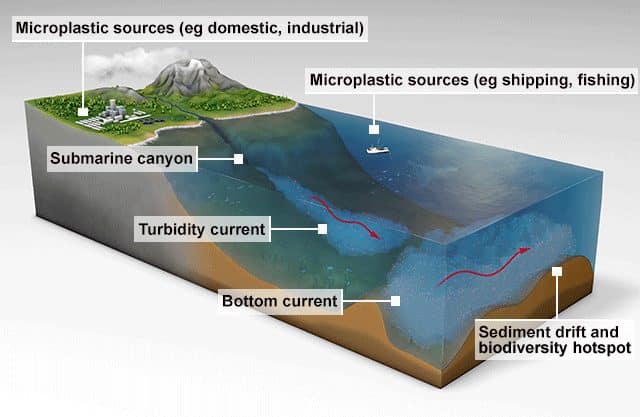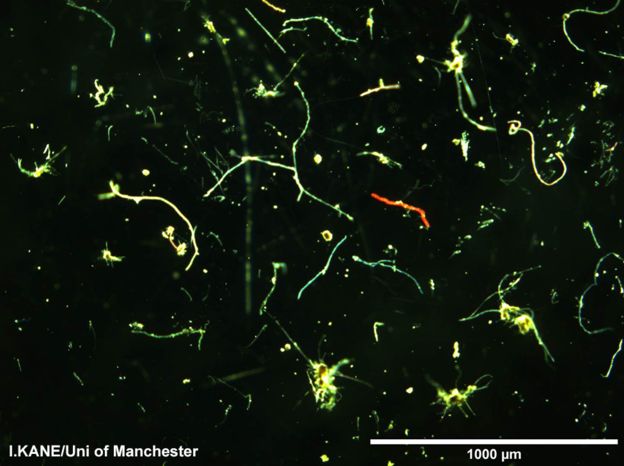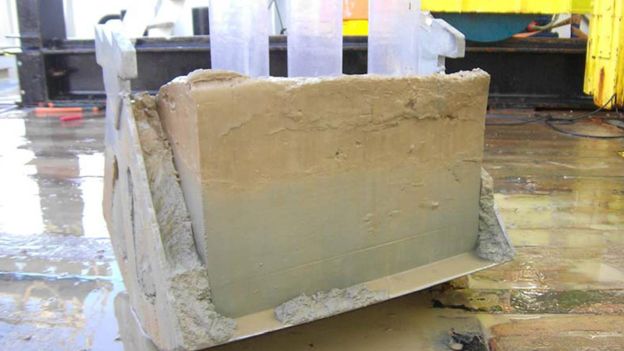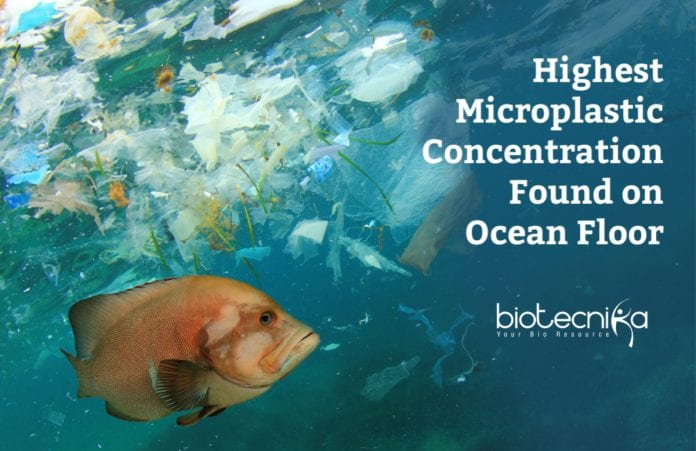High Microplastic Concentration in the Oceans
The highest level of microplastics ever recorded on the seafloor has been identified by scientists at the Mediterranean, near Italy with the contamination being pulled from the sediments at the bottom.
Around 1.9 million plastic pieces per square meter were found by the analysis led by the University of Manchester.
Tiny fragments from larger objects that had broken down over time and fibers from clothing and other synthetic textiles were among the items included in the contamination.
The researchers believe that due to powerful bottom currents in the ocean, the microplastics ( plastics that are smaller than 1mm) are getting accumulated in specific locations on the ocean floor.
Dr. Ian Kane, who fronted the international team said, “Imagine underwater sand dunes, similar drift dunes are built by these currents.”
He said, “These dunes can be hundreds of meters high and tens of kilometers long. They are among the largest sediment accumulations found on the planet. Predominantly, they are made of very fine silt, so expecting to find microplastics within them is natural.”
Every year, the amount of
plastic waste entering the oceans, mostly through rivers, is calculated to be something in the order of 4 to 12 million tonnes.
The great clusters of debris that wash up with the tides or floats in gyres on coastlines have been focused on by the media headlines. But considering the marine plastic budget, this visible trash is considered to represent just 1% of the waste. The other 99% wastes’ exact whereabouts are still unknown.
Maybe the much larger proportion has fragmented and simply sunk and some of it has surely been consumed by sea creatures.

Credits: I.KANE/UNI OF MANCHESTER
Ocean canyons and deep-sea trenches having high concentrations of microplastics in their sediments are already shown by Dr. Kane’s team.
Additionally, the group has run water tank simulations which shows just how efficiently flows of sand, mud, and silt of the type occurring in canyons will entrain and move fibers to even greater depths in the ocean.
Dr. Florian Pohl from Durham University said, “Tremendous volumes of sediment for 100s of kilometers across the ocean floor can be transported by a single one of these underwater avalanches (‘turbidity currents’). We are just starting to understand how these flow transport and bury microplastics from recent laboratory experiments.”
The study area in between Italy, Corsica, and Sardinia, the Tyrrhenian basin has nothing atypical.
Several other parts of the world have temperature and salinity contracts driven strong deep-water currents. These currents also supplying nutrients and oxygen to deep-sea creatures is the issue of concern. But the chance of ingestion by marine life can be increased as the microplastics also follow the same route and could settle into biodiversity hotspots.
She said, “Now, we have to overcome ocean plastic pollution with the same effort shown in the battle against COVID-19.”
At the Bren School of Environmental Science and Management, University of California at Santa Barbara, a professor of industrial ecology, Roland Geyer has been at the forefront of describing the waste streams through which plastic gets into the oceans and is investigating it.
He said, “The idea of how much total plastic has accumulated in the oceans is still not clear and we have a very poor understanding of this. Most of this plastic not floating on the ocean surface seems to be one emerging scientific consensus.”

Credits: I.KANE/UNI OF MANCHESTER
It is important to note that the beaches and the water column are also likely to contain major quantities while many scientists now think that most of the plastic is likely to be on the ocean floor.
“Stopping plastic from entering the oceans in the first place is what we really should be completely focused on.”
Source
High Microplastic Concentration in the oceans






























